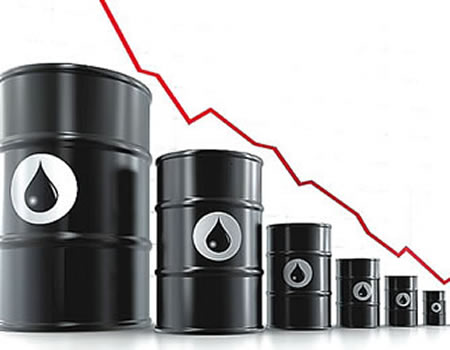Despite incessant attacks on major oil installations in the Niger Delta region, Nigeria was able to lift an average of 1.827 million barrels per day (mbpd) in 2016. The country had benchmarked 2016 budget on 2.2mbpd output but production fell below 1mbpd at the peak of attacks by the Niger Delta Avengers (NDA).
According to the monthly reports by the Nigerian National Petroleum Corporation (NNPC), government lifted 610,000 barrels per day while international oil companies (IOCs) lifted 1,240,000 bpd totaling 1,850,000 bpd on the average.
However, total crude processed by the three local refineries, Kaduna Refineries and Petrochemical Company (KRPC), Port Harcourt Refineries and Petrochemical Company (PHRC) and Warri Refineries and Petrochemical Company (WRPC) for the month of December 2016 was 141,998metric tones (MT) or 1,041,129 barrels (bbls) which translates to a combined yield efficiency of 82.44 per cent compared to crude processed in November 2016 of 232,768MT (1,706,655 bbls) which translates to a combined yield efficiency of 87.08 per cent.
For the month of December 2016, the three refineries produced 121,555MT of finished Petroleum Products out of 141,998MT of Crude processed at a combined capacity utilization of 7.55 per cent compared to 12.78 per cent combined capacity utilisation achieved in the month of November 2016. The adverse performance was due to crude pipeline vandalism in the Niger Delta region coupled with on-going refineries revamp; however the three refineries continue to operate at minimal capacity. However, only PHRC processed crude during the month.
In December 2016, 722.94 million litres of white products was supplied into the country through the Direct Supply Direct Purchase (DSDP) arrangements while 1,003.28 million litres was supplied in the month of November 2016; 683.15 million litres of PMS and 39.79 million litres of DPK were supplied through DSDP in December 2016.
The petroleum products (PMS & DPK Only) production by the domestic refineries in December 2016 amounted to 123.18 million litres compared to 191.75 million litres in November 2016.
A total of 481mmscfd was delivered to the gas fired power plants in the month of December 2016 to generate an average power of about 1,715MW compared with year 2016 average gas supply of 518mmscfd and power generation of 2,302MW.
Out of the 214.33 BCF of gas supplied in December 2016, a total of 126.62 BCF of gas was commercialized comprising of 24.43 BCF and 102.19 BCF for the domestic and export market respectively. This translates to an average daily supply of 788.11mmscfd of gas to the domestic market and 3,298.09mmscfd of gas supplied to the export market.
This implies that 58.08 per cent of the total gas produced was commercialized while the balance of 40.92 per cent was either re-injected or used as upstream fuel gas or flared. Gas flare rate was 9.87 per cent for the month of December 2016 i.e. 682.28mmscfd compared with average Gas flare rate of 9.48 per cent i.e. 669.38mmscfd for the period January 2016 to December 2016.
Total gas supply for the period January 2016 to December 2016 stood at 2,581.42 BCF out of which 1,448.91 BCF (307.16 BCF and 1,141.75 BCF for the domestic and export market respectively) was Commercialised while Non-Commercialised stood at 1,132.52 BCF.
Out of the 788.11mmscfd of gas supplied to the domestic market in December 2016, about 480.64mmscfd of gas representing 60.99 per cent was used for Gas-Fired power plants while the balance of 307.47mmscfd or 39.01 per cent was supplied to other industries. Similarly, for the period of January 2016 to December 2016 an average of 839.70mscfd of gas was supplied to the domestic market comprising of an average of 517.92mmscfd or (65.72 per cent) as gas supply to the power plants and 321.77mmscfd or (40.83 per cent) as gas supply to industries.
About 3,116.41mmscfd or 94.49 per cent of the export gas was sent to Nigerian Liquefied Natural Gas Company (NLNG) for December 2016 compared with the year 2016 average of 2,739.53mmscfd.






